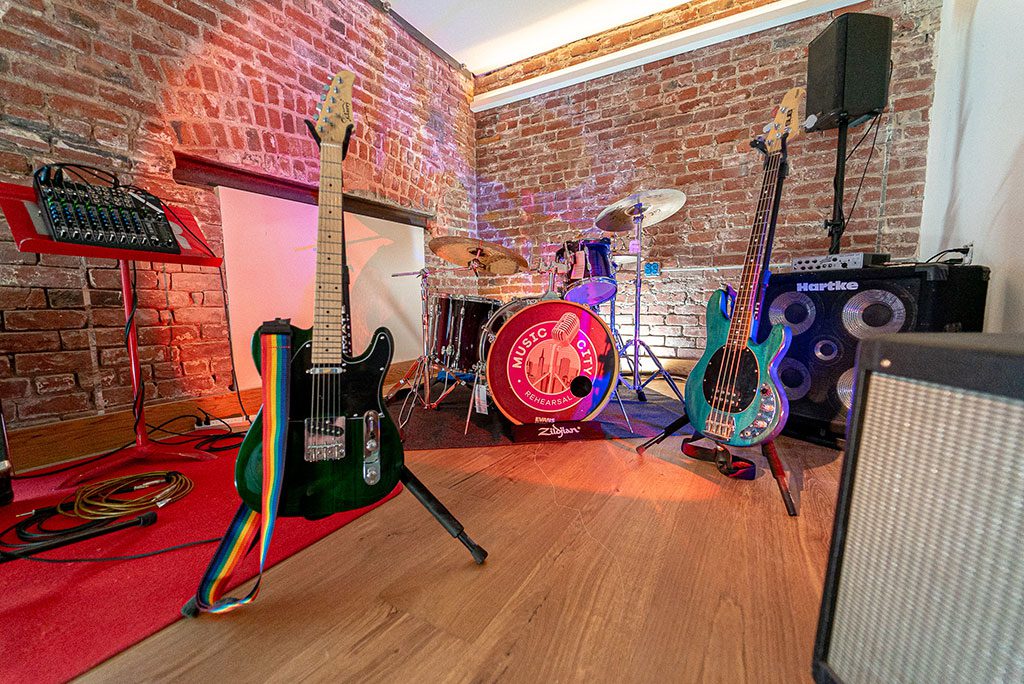Building Accessibility
Music City San Francisco strives to provide inviting accommodations that are welcoming and accessible for all individuals, including persons with hearing, vision, or any other impairment.
Due to the historic nature of the hotel and building, built in 1907, it is unfortunately not accessible to those who require wheelchair access. The hotel lodging rooms are located on the top two levels of the building and require walking up two flights of stairs to reach any of the guest rooms. The building does not have an elevator that accommodates hotel guests; however, with the expansion of the Music City San Francisco project, other levels of the building are built with ADA compliant, handicap accessibility in mind.
The hotel may be accessible to those who use a cane or walker, provided that they have the ability to climb two flights of stairs. Most of the hotel rooms have shared bathrooms. One of the shared bathrooms does have grab bars installed around the toilet and bath.
Our staff is happy to assist with any questions surrounding the accessibility of the building and lodging rooms, or any special accommodations needed for persons with disabilities. If you have any questions regarding the accessibility of our hotel, please contact us with any questions: Phone: (415) 816-6207; Email: frontdesk@musiccityhotel.org. Our staff will be happy to assist you 24 hours a day, seven days a week.
Website Accessibility
Music City San Francisco takes accessibility seriously, and we work hard to ensure maximum compliance with the Americans with Disabilities Act of 1990 in accordance with the guidelines shared on the ada.gov website.
Many people with disabilities use assistive technology that enables them to use computers. Some assistive technology involves separate computer programs or devices, such as screen readers, text enlargement software, and computer programs that enable people to control the computer with their voice. Other assistive technology is built into computer operating systems. For example, basic accessibility features in computer operating systems enable some people with low vision to see computer displays by simply adjusting color schemes, contrast settings, and font sizes. Operating systems enable people with limited manual dexterity to move the mouse pointer using keystrokes instead of a standard mouse. Many other types of assistive technology are available, and more are still being developed.
Poorly designed websites can create unnecessary barriers for people with disabilities, just as poorly designed buildings prevent some people with disabilities from entering. Access problems often occur because website designers mistakenly assume that everyone sees and accesses a web page in the same way. This mistaken assumption can frustrate assistive technologies and their users. Accessible website design recognizes these differences and does not require people to see, hear, or use a standard mouse in order to access the information and services provided.
To learn more about the Americans with Disabilities Act – specifically about the 1991 ADA Standards for Accessible Design – please visit the ADA Standards for Accessible Design website.

